At one of the dog training classes I took my first dog to, there was an elderly woman who had adopted a massive, very hyper German Shepherd.
Often the trainer would have to work with this dog because the owner wasn’t strong enough to hold onto or control her. All I could imagine was this woman being injured (completely unintentionally) by her pup while trying to take a walk.
Now, it may look a little scary, but when used properly, a prong collar is a safe and effective training tool for certain kinds of dogs.
They can help dog owners walk hard-to-handle dogs and can even keep previously unmanageable dogs out of shelters. Yay!
If other kinds of collars and training techniques just aren’t working for you, you may want to try using a prong collar with your dog. It is always best to do this with a help of a knowledgeable dog trainer.
How Should You Place a Prong Collar on a Dog?
It is vital to ensure that the dog prong collar is placed correctly so that it is helpful and safe.
- The collar should be placed on the dog’s neck behind its ears, and under the jaw. If the collar is placed lower than this, it would be rendered ineffective.
- Ensure to secure the leash just behind the dog’s ears with links facing upwards. Don’t clip the collar on the side of the dog’s throat or below its jaw.
- All the links should be excluded so that the collar fits perfectly and doesn’t hang. Because a sagging collar can injure your pet or cause them to break free, scraping their head with the collar.
- If loose, the collar won’t work. The prongs are customizable, so you can also remove a metal prong from the collar so that it fits your dog snugly.
How Does a Prong Dog Collar Work?
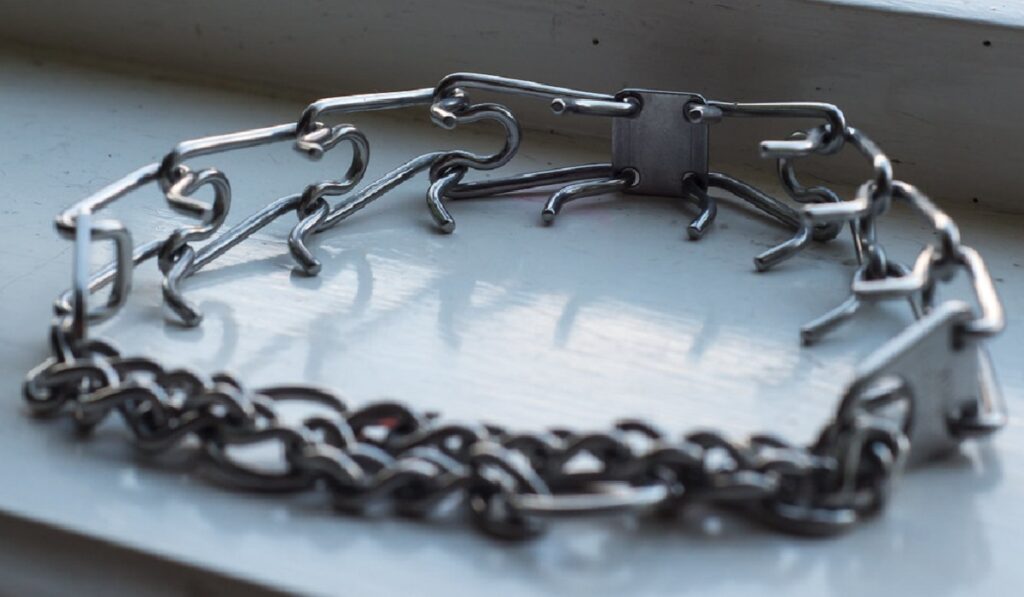
A prong collar, also sometimes called a pinch collar, is made up of multiple metal chain links that are connected and open toward a dog’s neck.
When you give a small tug on the leash, or if your dog pulls on a leash, the prongs deliver even pressure around your dog’s neck.
While this may seem painful or cruel, it actually can be safer than a dog pulling hard against a regular collar or a choke chain because the uneven, constant pressure can damage a dog’s trachea.
The goal is to give short, even pressure around their neck to get their attention, not to cause pain.
Prong collars are meant to mimic the kind of negative feedback that a puppy will get from their mother when she nips at its neck when an unwanted behavior happens.
How Should You Place a Prong Collar on a Dog Properly?
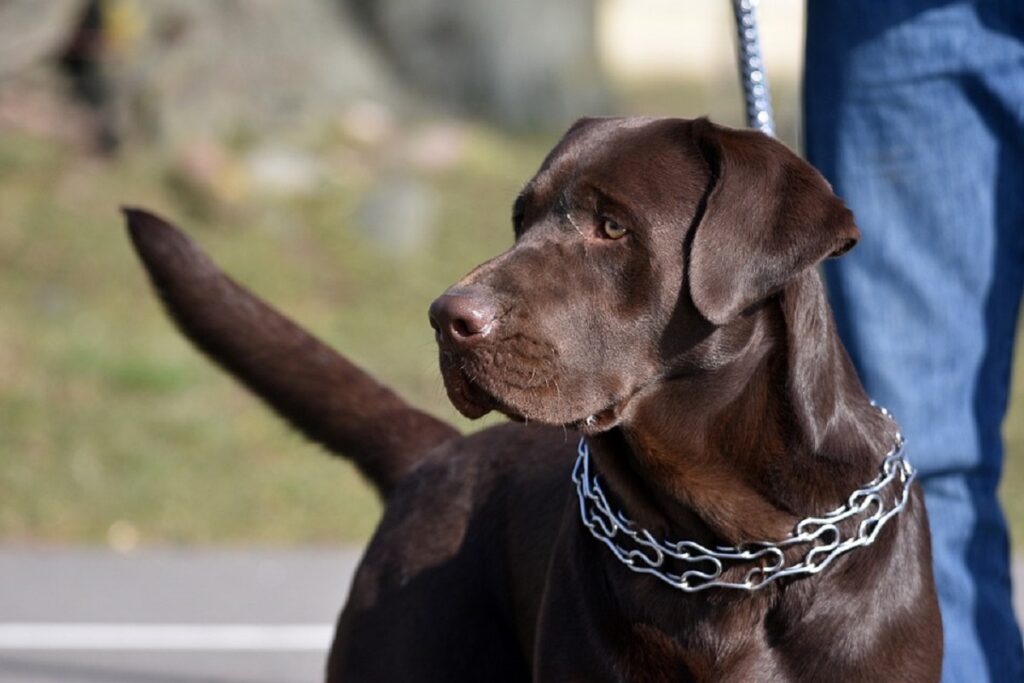
Getting the right fit and positioning is crucial with prong collars, so let’s break it down into simple steps.
Step 1: Measure Your Dog’s Neck
First, you’ll want to grab a cloth seamstress tape measure, or a string and ruler, to measure just below the ears on your dog’s neck.
If you are using a string, measure the length of the string against the ruler to get your measurement.
Add two inches to this measurement.
Step 2: Pick a Right Size Prong Collar for Your Dog
Next, compare your measurement to the size chart for a prong collar. It’s ok if the size is a little too large because you can remove individual chain links to get the perfect fit.
Be sure to purchase a high-quality prong collar. Herm Sprenger is a favorite brand among trainers. Low-quality prong collars could have sharp prongs, causing pain and potential injury. Good collars should have blunt, metal prongs.
Step 3: Proper Placement
Once you have your dog’s collar, remove extra chain links if necessary.
You will attach your leash to the O-ring. Then, detach one of the chain links. Put the collar around your dog’s neck and then pinch the chain link and slide it back into place.
You can watch this video to see how this is done.
Be sure that the chain the leash attaches to forms a triangle and is not twisted at all, as this will cause the collar not to work correctly.
It should fit quite snuggly just below their ears, which is why you don’t want to slide the collar on over your dog’s head.
The O-ring for attaching the leash should be facing upward, at the back of their head, between your dog’s ears, not to the side or in front of them.

Step 4: Ensure Correct Fit
Double-check that the collar is properly fitted. The collar should fit snugly around the dog’s neck. You want to be able to fit one to two fingers between a prong on the collar and your dog’s neck.
The prongs should not be pressing into your dog’s skin or causing any kind of pain when the leash is loose. This is a sign that the collar is too tight.
When Should I Start Using a Prong Collar?
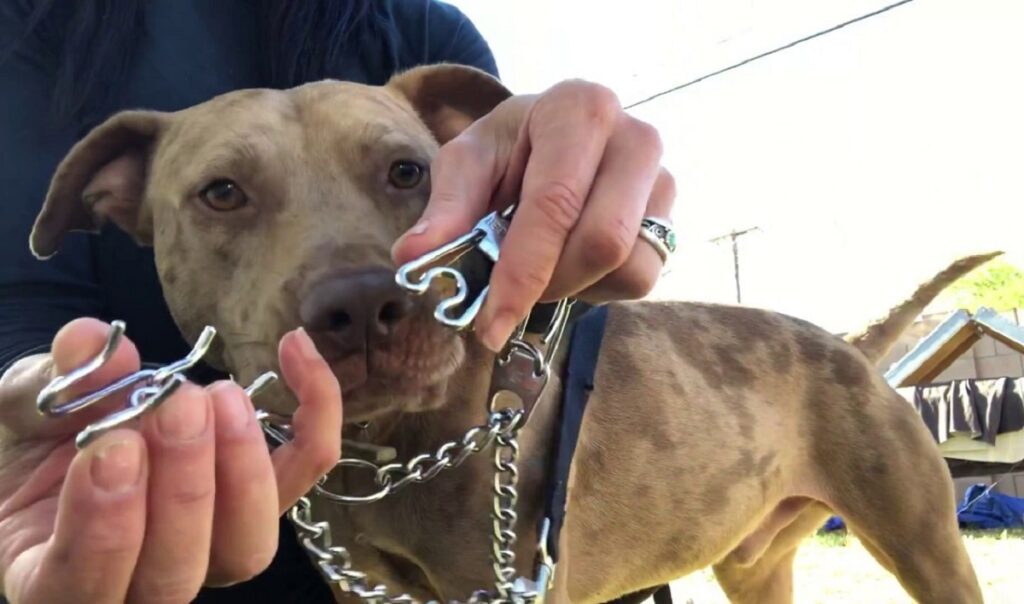
A prong collar is only used for training sessions or on a leash walk. They are not recommended until all other training methods have been tried.
This is basically the most intense level of training collar.
You may want to work with a positive reinforcement dog trainer and try various other collar and harness types before moving to a prong collar.
Can Puppies Use a Prong Collar?
In short, no.
It is not safe to put a prong collar on a puppy until they are six months of age. And remember, the only reason to use a prong collar is because you’ve exhausted all other training options.
Most puppies learn quite easily. With a good dog training class and at-home practice, you should be able to train a puppy without ever needing a prong collar.
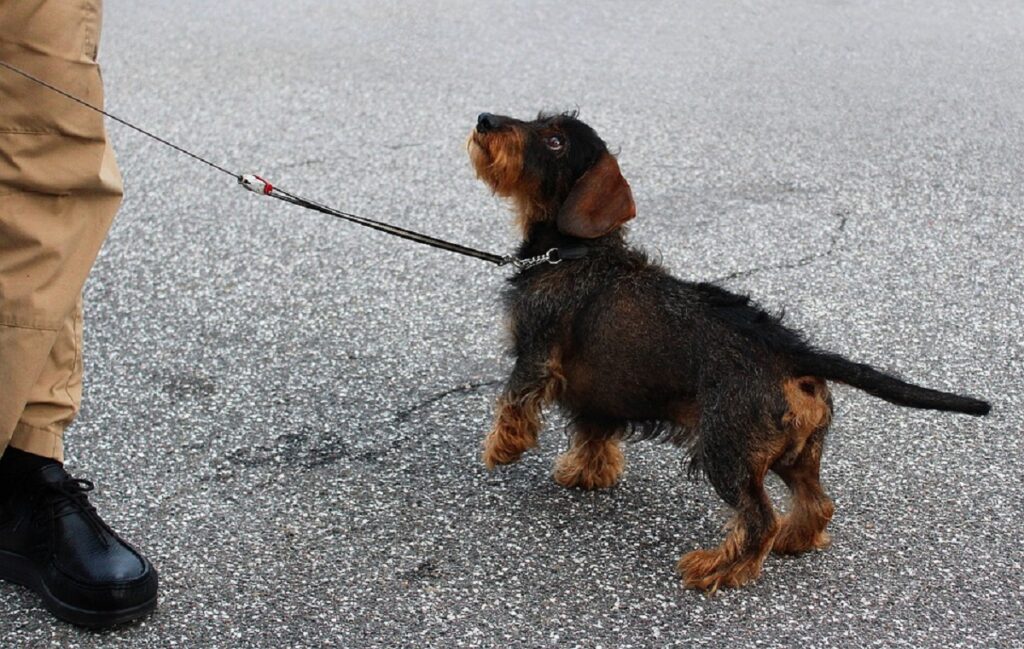
What Kind of Dog Would Benefit from a Prong Collar?
Prong collars are helpful for training and staying in control of reactive dogs or dogs who won’t stop pulling on walks.
Petite or elderly dog owners may need a prong collar to keep their dogs from dragging them down the road when they go for a walk.
If you have a strong dog for whom other training methods haven’t worked, a prong collar is likely the next step.
While you may be tempted to put a prong collar on aggressive dogs, this could be a mistake. This can cause them to redirect their aggression or could increase it.
You should never put a choke collar or prong collar on fearful or anxious dogs as it is more likely to increase their fear and anxiety than help.
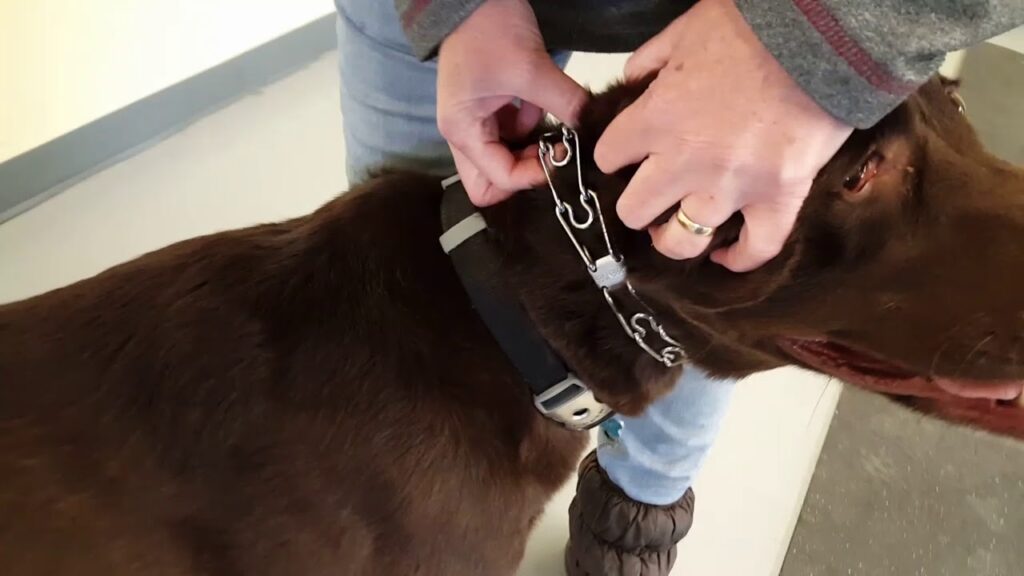
Are Prong Collars Safe for My Dog?
A prong collar is a safe and effective tool when used properly.
It is recommended that you work with a trainer to make sure that you learn how to use a prong collar properly so that you don’t harm your dog.
A reward or correction needs to be given within 2 records of a dog’s behavior so that they understand the feedback. If this is not done properly, your dog could interpret feedback as punishment.
It is often best to let your dog “self-correct” with this kind of collar. “For example, if you are in the heeling position and halt but the dog continues forward, the collar will tighten and self-correct the dog.” This is self-correction. You don’t need to pull on the leash at all. It just happens naturally.
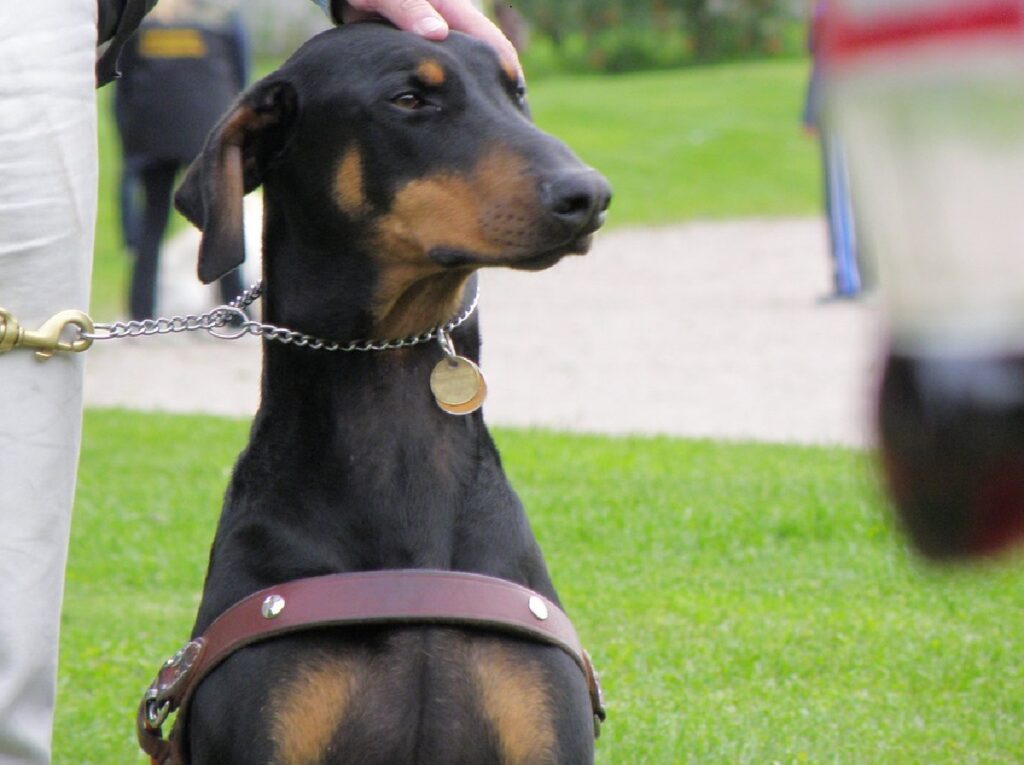
Safety Tips
#1: A Dog Should Never Be Tied out or Left Unattended with a Prong Collar On.
They are to be used for training sessions or walks only.
Most examples of dogs being injured by prong collars come from them being left alone with the collar on.
#2: You Should Never Be Using a Prong Collar to Discipline or Punish Your Dog.
These dog collars can cause more harm than good if used incorrectly.
#3: Be Sure to Only Give Short Tugs When Your Dog Engages in Unwanted Behavior.
The collar should release immediately after a short tug.
If you are used to walking your dog with a regular collar, you will need to use much lesser force to get their attention than you think.
#4: Do Not Use Prong Collars with Rubber Tips on Your Dog.
This may seem like a more comfortable option for your dog, but it is actually the opposite.
While metal prongs will slide smoothly through their fur, rubber-tipped prongs can get caught on your dog’s fur and skin which can cause pain or break open their skin.
(Avoid a low-quality dog collar, as this could have sharp metal prongs. Herm Sprenger is known for being a quality brand.)
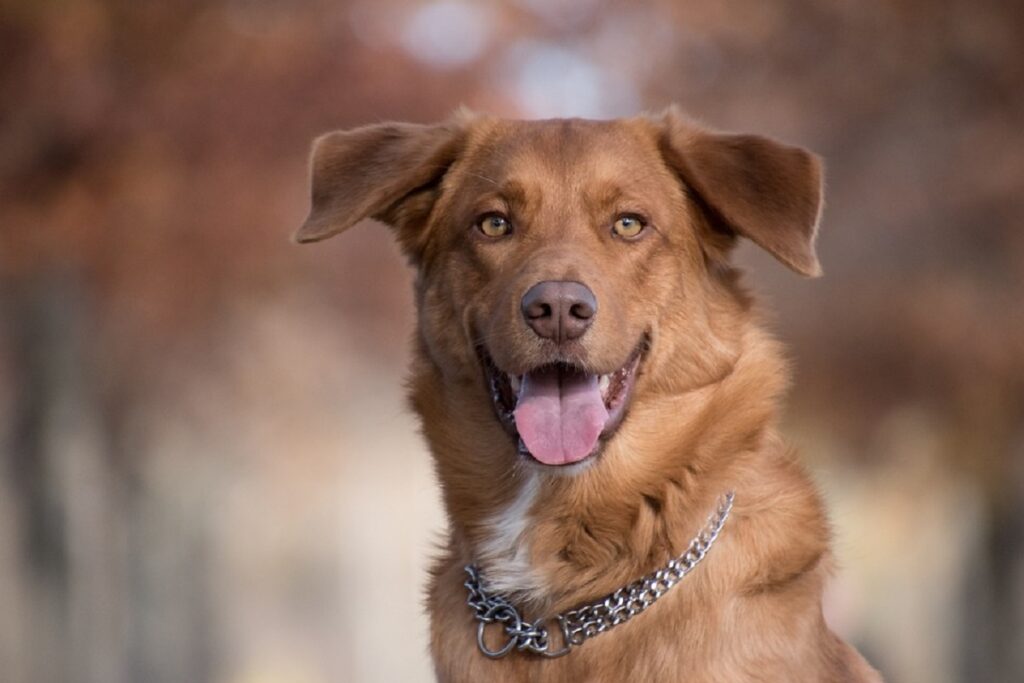
In Conclusion
Like any other kind of tool, prong collars can be extremely effective when used on a dog correctly.
Unfortunately, often people mistakenly operate a prong collar incorrectly, which can cause harm.
In order to prevent injury while using a prong collar on a dog, educate yourself on how to get the right fit, how to position a prong collar correctly, and how to train your dog in a safe and effective manner.
My hope is that this article has helped dispel some common myths about prong collars and helped inform you on how should you place a prong collar on a dog.
When correctly used, these collars keep many pets out of animal shelters every year, which is a huge win for us dog lovers!












